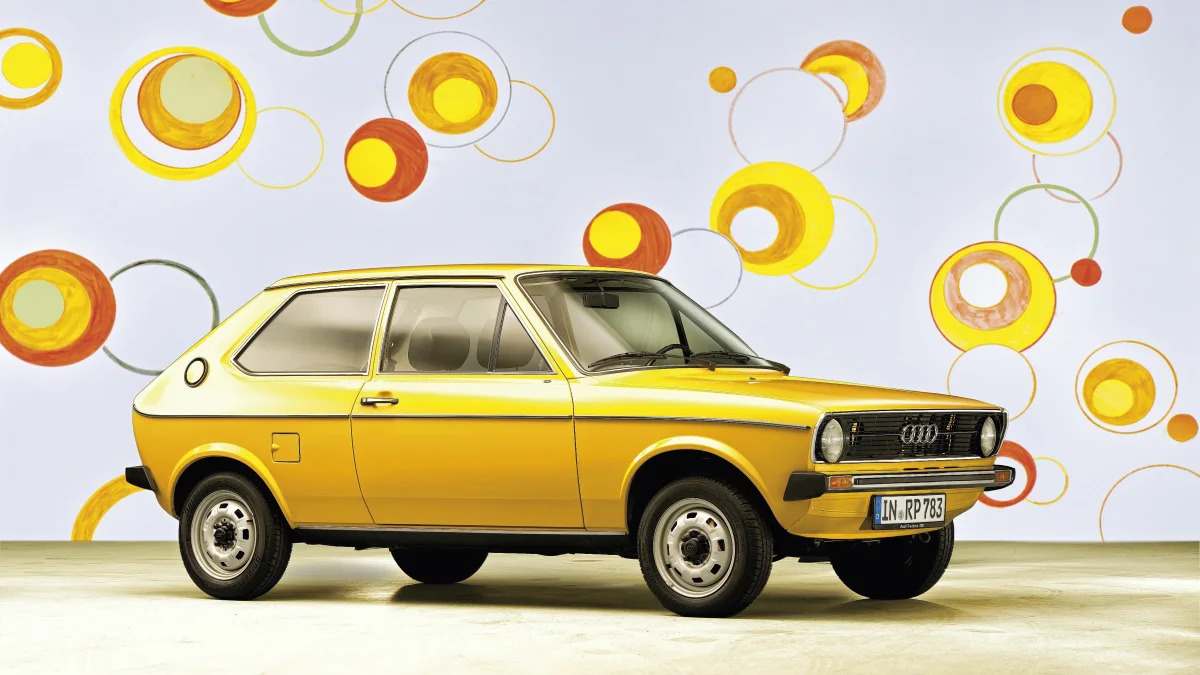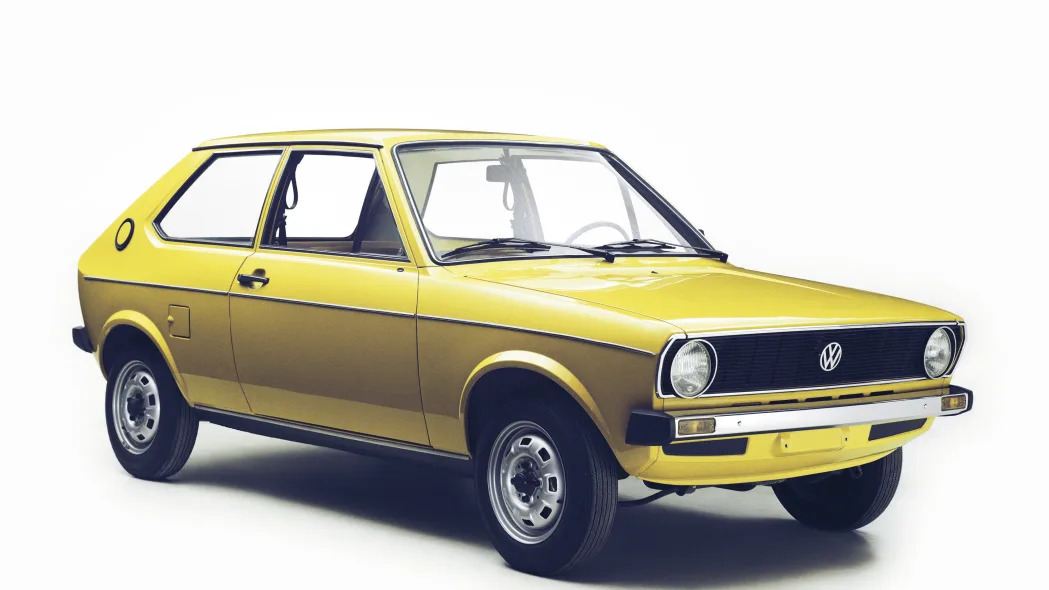There's a part of the Audi iceberg that we've never seen in the United States. It's where cars like the A1, which is now in its second generation, and the A2 are found. The car that started this lineage is a small, two-door hatchback called 50 that turns 50 years old in 2024.
Even in Germany, the odds of seeing a 50 are low. Audi built 180,828 units from 1974 to 1978, so it was hardly a high-volume model, and it's a car that very few bothered to preserve. The 50 arguably did very little for Audi — it wasn't even directly replaced. It was sort of a stop-gap model that traced its roots to NSU, one of the companies that merged to form Audi as we know it, and gave Volkswagen a significant boost.
Rewind to 1961: NSU released a two-door, 135-inch-long city car called Prinz 4 that was powered by an air-cooled, rear-mounted two-cylinder engine. Two years later, the German brand unveiled a longer, more powerful, and overall more usable evolution of the car called Prinz 1000 that gained a four-cylinder engine. This variant proved particularly popular in racing, and NSU happily capitalized on this success by launching a pair of factory-developed performance models called TT and TTS, respectively. I'm betting that both names ring a bell.
In the late 1960s, NSU began planning ground-breaking changes for its next city car. By that point, it was obvious that cars powered by a rear-mounted engine were beginning to look like an anachronism, and not a very desirable one. Volkswagen, Fiat, Renault, and Simca were among the European brands gradually ditching the layout in favor of a front-mounted engine spinning the front wheels. Also, air cooling was out; water cooling was in. Finally, the next NSU city car would need to stand out with a vastly more modern-looking design; the Prinz kind of looked like a Corvair that shrunk in the wash. The engineering department looked over these guidelines and began developing the car.
NSU wasn't working alone — far from it. Volkswagen purchased the troubled brand in 1969, merged it with Auto Union (which was itself already the product of a merger), and created the modern-day Audi brand. Ludwig Kraus, a former Daimler-Benz engineer who worked as Audi's technical director, spearheaded the city car project. The end result was a 137-inch-long two-door hatchback with an angular-looking exterior design penned by Hartmut Warkuß, who became Volkswagen's head of design in 1993, and a surprisingly spacious interior.
At launch, buyers had two variants of the 50 called LS and GL, respectively, to choose from. Both cars used a 1.1-liter four-cylinder engine, but the LS offered about 50 horsepower while the GL was rated at approximately 60. Launching a small, fuel-efficient car in 1974 had its perks: the effects of the 1973 oil crisis still lingered like a bad hangover. Audi had sold about 43,000 units of the 50 by March 31, 1975.
March 1975 is also when the 50's career took a turn for the worse. Eager to reap the rewards of economies of scale, and happy to cash in on demand for small, fuel-sipping cars, Volkswagen released a badge-engineered 50 called Polo (shown above) and placed it below the first-generation Golf. Visually, not a lot changed beyond the emblems and some of the trim pieces; the two cars even shared their steel wheels.
Over the following years, the 50 began making far more sense as a Volkswagen than as an Audi. Group executives planned to push the Audi brand upmarket in terms of vehicle size, pricing, and technology, while Volkswagen was supposed to stay true to its name: the people's car. Production of the 50 ended in the summer of 1978 and Audi steered clear of the city car segment until it released the A2 in 1999. In contrast, the original Polo remained in production until 1981 and Volkswagen immediately replaced it with a second-generation model offered in two body styles. In 2024, the Polo is well into its sixth generation, and Volkswagen has sold over 18 million units of the car since 1975.










Sign in to post
Please sign in to leave a comment.
Continue